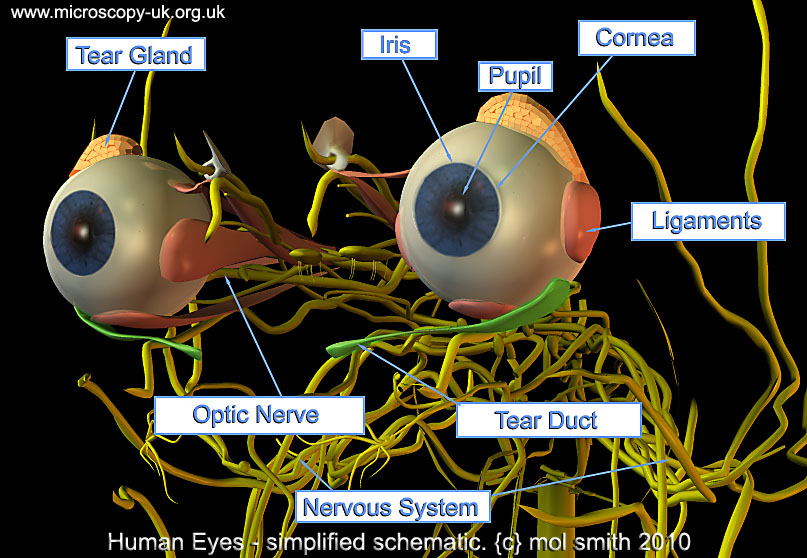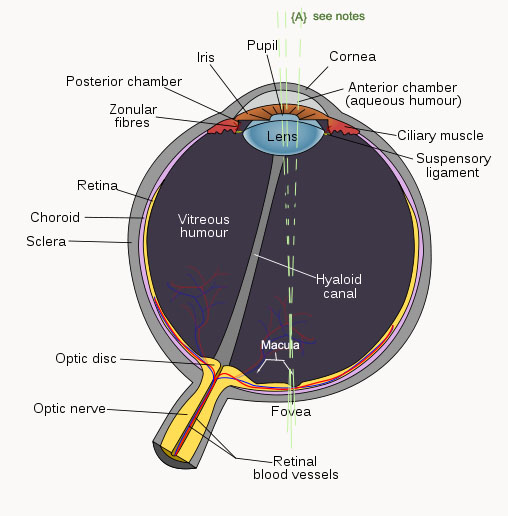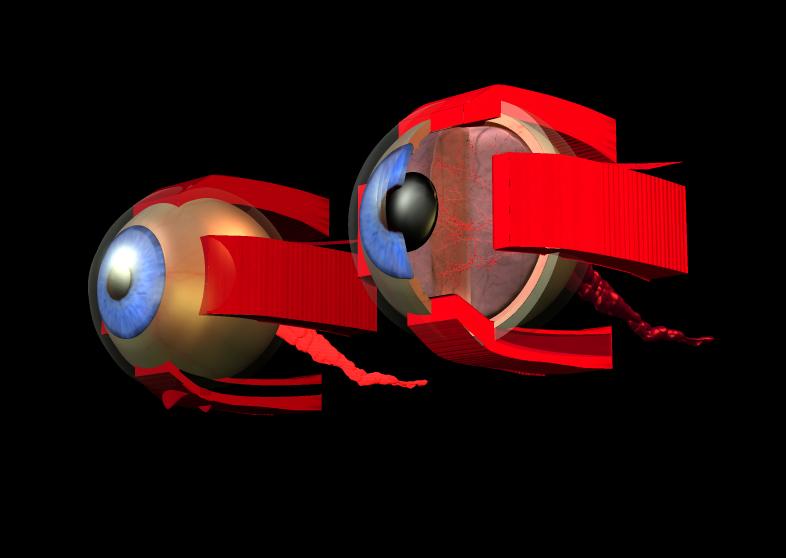|
An Overview of Human Cells for Light
Microscopists |
|
Page: 1 | 2 | 3 | 4 | 5 | 6 For Part 1 The Human Cell - go here! Part 2 Human Skin - go here! |
|
| Insect Eyes Insect's View: Simulation1 Simulation2 Simulation3 Human Eyes1 Human Eyes2 Resources and external links | |
|
Human Eyes
 The astounding things about human eyes is that they auto-focus and they also adjust their irises to control light input. They are self-cleaning, and because we have two of them placed side-by side, they provide us with two separate views of the external world - an attribute which the brain uses by combining the two images into a single stereoscopic 3D image. This aids us in determining depth and the relative distances of objects in our field of view. Our eyes have a blind spot. This is the area at the back of the eye which is occupied by the optical disc. the point at which the nerve cells leave the eye to connect to the brain. There can be no rods or cones in this area to sense light. The alternate 3D model rendered below may also help to illuminate the parts of the human eye.
Watch a 3d model rotation of human eyes in situ and relative to the human brain here. |
||||
Comments to the author Mol
Smith are welcomed.
Microscopy
UK Front Page
Micscape Magazine
Article Library
all material © Mol Smith except where indicated
Published in Jun 2010 Micscape Magazine.
Please report any Web problems or offer general comments to the Micscape Editor.
Micscape is the on-line monthly magazine of the Microscopy UK web site at Microscopy-UK
© Onview.net Ltd, Microscopy-UK, and all contributors 1995 onwards. All rights reserved. Main site is at www.microscopy-uk.org.uk

